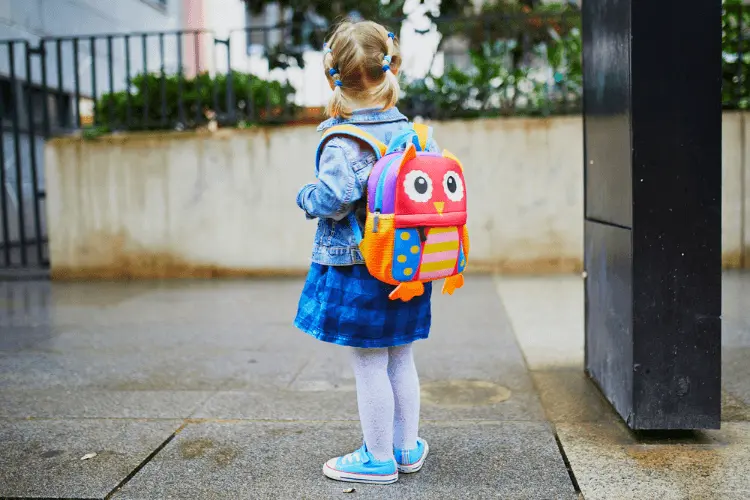School uniforms have long been a topic of debate among parents, educators, and school administrators. While some view them as restrictive, others see the numerous benefits they offer. This blog post aims to explore why school uniforms are important, with a focus on their historical significance, benefits, criticisms, and real-world examples. By the end, you’ll have a clear understanding of how school uniforms can positively impact the academic and social environment of a school.
A Historical Perspective on School Uniforms
School uniforms have a rich history that dates back centuries. They were first introduced in England in the 16th century at charity schools for poor children. The aim was to create a sense of equality among students from different socioeconomic backgrounds. Over time, the concept of school uniforms spread to various countries, each adapting the policy to meet their cultural and educational needs.
The evolution of school uniform policies differs across the globe. In Japan, uniforms are seen as a way to instil discipline and a sense of belonging. In contrast, American schools have had a more sporadic adoption, often influenced by social and political climates. Despite these differences, the core idea remains the same—promoting a unified school culture.
Promoting Equality Among Students
One of the most significant benefits of school uniforms is promoting equality among students. In a diverse society, children come from various socioeconomic backgrounds. Uniforms help level the playing field by eliminating the pressure to wear trendy or expensive clothing. This fosters an inclusive environment where students can focus more on their studies and less on their attire.
Uniforms also reduce instances of bullying related to clothing choices. When everyone wears the same outfit, it eliminates a common source of teasing and exclusion. This can significantly improve the overall school climate, making it a safer and more welcoming place for all students.
Enhancing School Safety and Security
School safety is a paramount concern for parents and educators alike. Uniforms can play a crucial role in enhancing school safety. When students wear uniforms, it’s easier to identify outsiders who may pose a threat. This added layer of security can help prevent unwanted intrusions and ensure that only authorised individuals are on school premises.
Furthermore, uniforms can simplify the implementation of dress codes. Schools often struggle with enforcing diverse dress codes, which can lead to inconsistencies and disputes. A uniform policy provides a clear, straightforward guideline that is easy to monitor and enforce, contributing to a safer school environment.
Fostering a Sense of Community and Belonging
Another compelling reason for school uniforms is their ability to foster a sense of community and belonging. Uniforms create a visual representation of unity and school pride. When students wear the same attire, it reinforces the idea that they are part of a larger community working towards common goals.
This sense of belonging can boost student morale and motivation. Knowing they are part of a united group can encourage students to participate more actively in school activities and events. It also instils a sense of responsibility and accountability, as students understand they represent their school in the broader community.
Challenges and Criticisms of School Uniforms
Despite the numerous benefits, school uniforms are not without their challenges and criticisms. One of the most common arguments against uniforms is that they limit individual self-expression. Critics argue that clothing is a form of personal identity, and uniforms suppress this form of expression.
Another concern is the cost of uniforms. While they can save money in the long run, the initial investment can be a burden for some families. Schools need to consider these factors and provide assistance or subsidies to ensure that uniforms are accessible to all students.
Addressing Common Concerns
To address these concerns, schools can take a balanced approach. For instance, allowing students to personalise their uniforms with accessories can provide a compromise between uniformity and individuality. Schools can also work with uniform suppliers to offer affordable options and financial aid for families in need.
By engaging with parents, students, and the wider school community, schools can develop uniform policies that are fair and considerate of everyone’s needs. Open communication and flexibility are key to successfully implementing and maintaining a uniform policy.
Research and Case Studies on School Uniforms
Numerous studies have explored the impact of school uniforms on academic and social outcomes. Research from the University of Nevada found that schools with uniform policies experienced fewer disciplinary issues and higher attendance rates. Another study by the National Association of Elementary School Principals reported that 86% of school leaders believe uniforms make a significant, positive impact on peer pressure.
Real-life examples also highlight the benefits of uniforms. In Long Beach, California, after implementing a uniform policy, the district saw a 91% reduction in school-related crime. Similarly, schools in the UK have reported improved student behaviour and academic performance following the introduction of uniforms.
Parent and Student Perspectives
To gain a comprehensive understanding of the impact of school uniforms, it’s essential to consider the perspectives of parents and students. Many parents appreciate the simplicity and cost-effectiveness of uniforms. “I no longer have to worry about what my child will wear each day, and it has significantly reduced our clothing expenses,” says Jane, a mother of two.
Students, too, have mixed feelings about uniforms. While some feel restricted, others find comfort in the simplicity. “It’s easier to get ready in the morning, and I don’t feel pressured to keep up with fashion trends,” says Emma, a high school student.
Implementing Effective Uniform Policies
For schools considering or re-evaluating their uniform policies, there are several best practices to keep in mind. First, involve the school community in the decision-making process. Conduct surveys, hold meetings, and gather feedback to ensure everyone’s voice is heard.
Next, be clear and consistent in the implementation of the policy. Provide detailed guidelines and communicate them effectively to parents and students. Finally, offer flexibility where possible. Allowing for seasonal variations and providing options for personalisation can make the policy more acceptable.
Bringing It All Together
In summary, school uniforms offer a range of benefits, from promoting equality and enhancing safety to fostering a sense of community. While there are valid criticisms, these can be addressed through thoughtful and inclusive policy-making.
For parents, educators, and school administrators, understanding the importance of school uniforms can lead to more informed decisions that ultimately benefit the entire school community. By considering the historical context, research, and real-life examples, we can see that uniforms play a crucial role in creating a positive learning environment.



